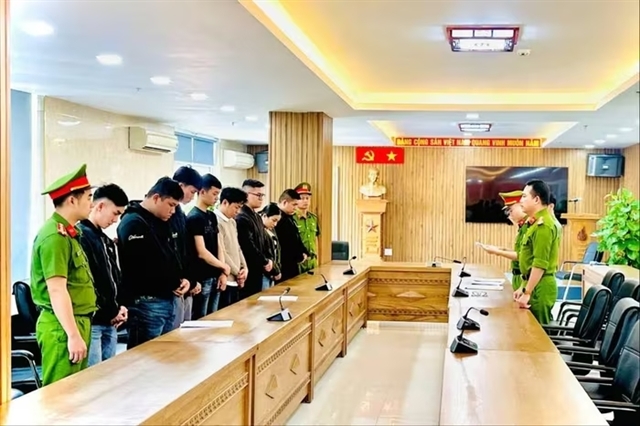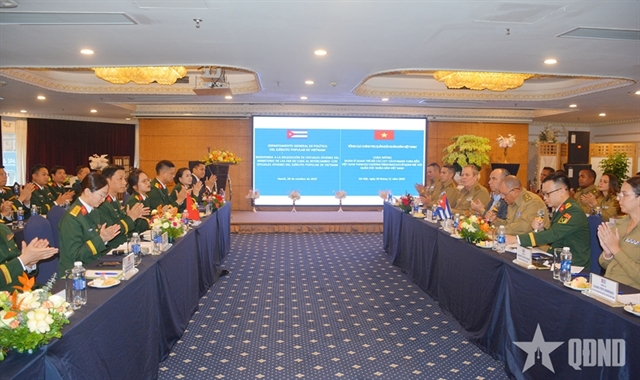 Economy
Economy
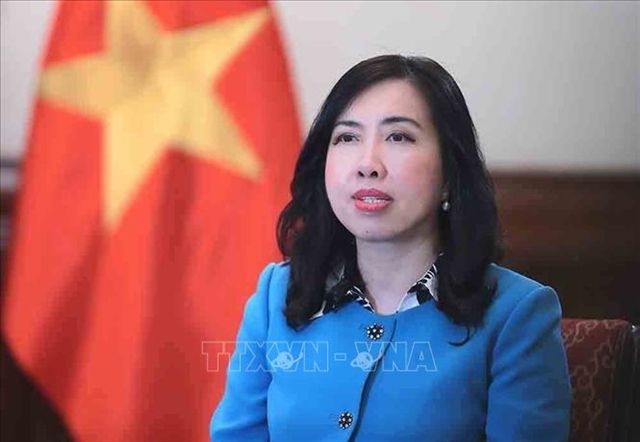
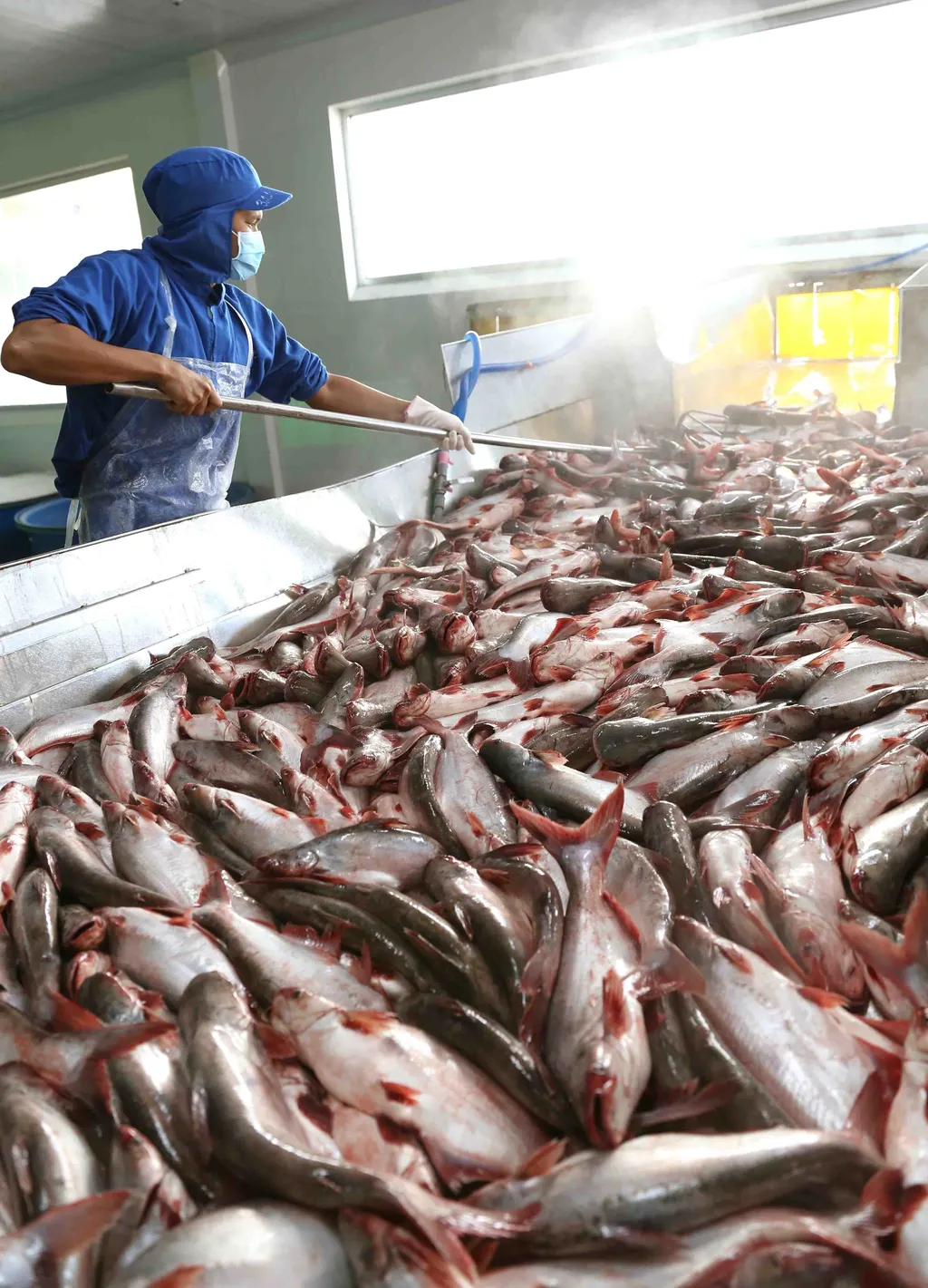 |
| Preliminary processing of tra fish. — VNA/VNS Photo |
HÀ NỘI — Deputy Minister of Industry and Trade Nguyễn Sinh Nhật Tân has had a working session with the United Kingdom's Secretary of State for Scotland Alister Jack in Hà Nội on Thursday, who is visiting Việt Nam on the occasion of the 50th anniversary of the two countries' diplomatic relations.
Deputy trade minister Tân told the UK guest that economic, trade, and investment cooperation has always been a bright spot since Việt Nam-UK relations was elevated to a Strategic Partnership in 2010.
Currently, the UK is the 9th largest export market in the world and the 4th largest in Europe and the Americas for Việt Nam.
Economic, trade, and investment cooperation between the two countries is deepening and becoming more substantial.
Regarding the bilateral trade cooperation, Deputy Minister Tân noted that in the early months of 2023, two-way trade between Việt Nam and the UK has witnessed a downward trend.
For the first eight months of 2023, bilateral trade turnover reached US$4.62 billion, a slight decrease of 0.9 per cent compared to the same period last year. Specifically, Việt Nam's exports to the UK reached nearly $4.1 billion, down 0.1 per cent compared to the same period, while imports from the UK reached $460.1 million, an increase of 6 per cent over the same period.
In the context where Việt Nam's trade with most key export markets in Europe has witnessed a significant decline due to global economic challenges, maintaining such growth compared to the same period last year is encouraging.
As of August 20, 2023, the UK has 542 direct investment projects in Việt Nam with registered capital of about US$4.29 billion, ranking 15th out of 143 countries and territories investing directly in Việt Nam. In the first eight months of 2023, the UK has had a total of 34 new investment projects in Việt Nam with registered capital reaching $48.3 million.
Deputy Minister Tân underscored that the UK-Việt Nam Free Trade Agreement (UKVFTA), taking effect since May 2021, and the Comprehensive and Progressive Agreement for Trans-Pacific Partnership (CPTPP), which the UK joined on July 16, 2023, will be strong drivers to further develop two-way economic, trade, and investment relations in the coming time.
Secretary Alister Jack reiterated the importance that the UK attaches to its trade relationship with Việt Nam and the commitment of the UK to deepen its trade ties with Việt Nam.
The UK official expressed gratitude for the support from the Ministry of Industry and Trade of Việt Nam regarding the UK's accession to the CPTPP, and provided updates on the progress of approval and legislative changes in the UK to ratify the CPTPP accession as soon as possible.
Secretary Jack highlighted that the UK's official signing of the CPTPP has opened up significant opportunities for businesses from both countries to take advantage of the benefits from this agreement in the near future.
Regarding specific cooperation between Việt Nam and Scotland, Secretary Jack stated that the export value from Scotland to Việt Nam reached £83 million in 2022, an increase of 11 per cent compared to the previous year.
Under the UKVFTA, 45 per cent of import duties on Scottish whisky are gradually reduced to 0 per cent over six years.
With the achievements in bilateral trade between Việt Nam and Scotland, the Vietnamese trade official expressed hope that Vietnamese specialty products, especially agricultural products, could have deeper access to supermarket chains, supply chains, and consumers in Scotland and the UK market in general in the near future.
Regarding the Just Energy Transition Partnership (JETP), Deputy Minister Tân also appreciates the UK's active participation as a partner and their willingness to support Việt Nam in fulfilling its commitments to greenhouse gas emissions reduction.
The Ministry of Industry and Trade is also urgently coordinating with relevant ministries and sectors to promptly develop a plan for implementing JETP within the framework of the Technology and Energy Group and will continue to closely collaborate with the relevant agencies and organisations of the UK in the future.
At the meeting, both sides have also agreed on plans to organise the 14th Việt Nam-UK Joint Economic and Trade Committee (JETCO 14) and the 3rd meeting of the Joint Trade Committee for the UKVFTA in 2024 in the UK. — VNS
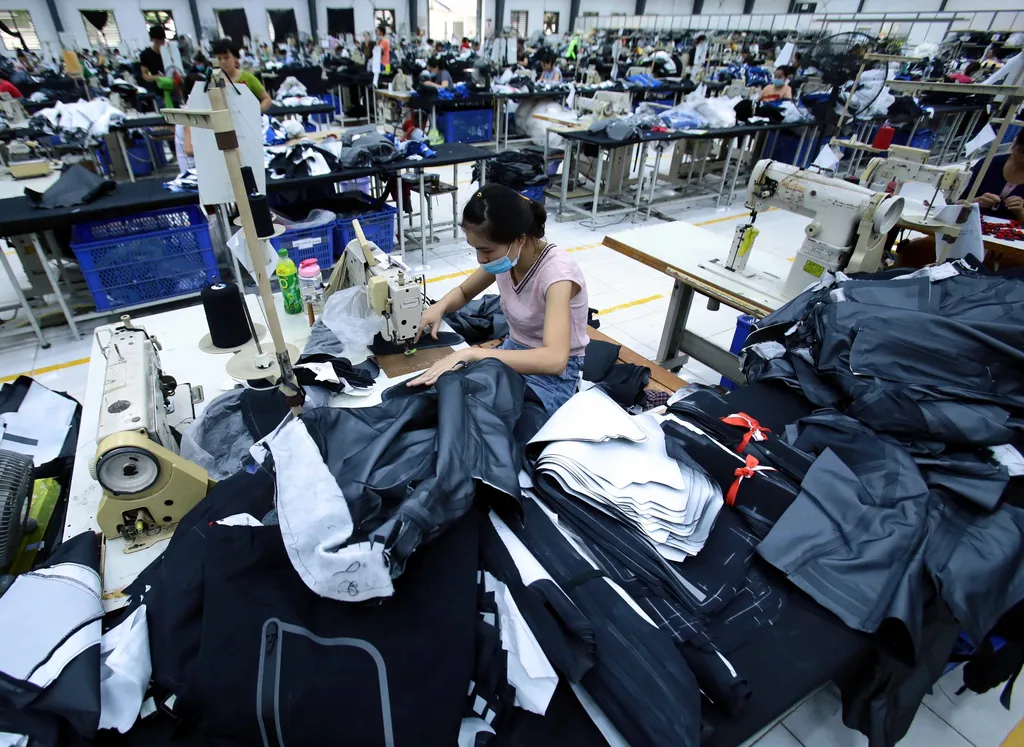 |
| A garment factory that produces exports to EU and UK markets. —VNA/VNS Photo |
The UKVFTA locks in 65 per cent of all tariffs that have been eliminated since the EU-Việt Nam FTA entered into force. This will increase to 99 per cent of tariffs after a schedule of between 6-9 years. This secures import tariff elimination for products such as clothing, fabric and footwear – meaning customers and businesses may benefit from lower prices on these products. Tariffs will be reduced per a schedule that stipulates equal annual reductions from entry into force of the agreement.
With such commitments, the UK exporters to Việt Nam and the UK importers from Việt Nam stand to benefit. Specifically:
• For goods exported by UK exporters to Việt Nam:
- 48.5 per cent of tariffs lines were eliminated on January 1, 2021;
- 91.8 per cent of tariff lines will be eliminated by January 1, 2027;
- 98.3 per cent of tariff lines will be eliminated by January 1, 2029;
- 1.7 per cent of tariff lines are partially liberalised through tariff rate quotas (the quota volumes are consistent with Việt Nam's WTO commitments and duties within quotas will be removed by 2031) or not entitled to preferential treatment.
• For goods imported by the UK importers from Việt Nam:
- 85.6 per cent of tariff lines were eliminated on January 1, 2021;
- 99.2 per cent of tariff lines will be eliminated by January 1, 2027;
- 0.8 per cent of tariff lines are partially liberalised through tariff rate quotas (with preferential tariffs for in-quota products of 0 per cent).


